Customer Service Plan
2025-2026
Contents
Overview

Since launching our Customer Service Strategy: Making a difference for our customers in 2021, we’ve published five annual plans including this one. We have completed the second road period and in this, our interim year before our third road period, we have focussed in on journey time and average delay. This is because we know that delay is one of the biggest impacts to our customers journey satisfaction as measured by the Strategic Roads User Survey (SRUS).
We’re investing in smoother, and clearer routes, enhancing communication during disruptions, and supporting walkers, cyclists and horse riders with routes around our network. We will continue to tackle roadside litter and improving facilities for lorry drivers and disabled customers. Insight drives our priorities, so we will collaborate with Active Travel England, transport watchdog Transport Focus, as well as large stakeholders such as Disabled Motorists UK, the Department for Transport, and many others. We are continuing to build capability within our teams and looking at innovative ways to bring the training to life using virtual reality training and sharing experiences across and with our supply chain partners.
We will continue to support our customers with behaviour change campaigns to improve the experience for all, as well as making improvements and enhancing the ways in which customers can contact us with self-serve options, and sharing details across our social media channels of the work we are doing. Every commitment in this plan has a senior sponsor from our Executive Customer Service Committee to ensure clear ownership, robust plans, and delivery.
Our commitment now and in the future is to provide better customer satisfaction with journey experiences, to continue supporting the economy, and connecting the country. That means being more responsive, more inclusive, and more ambitious, so we can continue making a difference for our customers.
Elliot Shaw,Chief Customer and Strategy Officer
Journey time
Our customers have told us that smooth and reliable journeys are what matter to them the most. Because of this, we’re improving the ways in which we manage roadworks, incidents and delays to enable safer, stress-free journeys and drive the economy. With traffic projected to increase on our roads, our primary focus will be to keep our network running safely and smoothly and our customers informed and prepared.
We will:
- roll out regional delay plans with a focus on reducing delays and improving congestion at identified hot spots, utilising data and analysis
- reduce delay by improving travel choice such as focusing on recurrent congestion, working with large traffic generators and facilitating active travel for short and everyday journeys
- enhance customer focused decision making of delivery functions to prioritise and manage responses at key locations on the Strategic Road Network. This will be done through more proactive collaboration, enhancing the use of customer insight by delivery teams and effective utilisation of available resources
-
continue to improve the information provided to our customers via third-party wayfinding information services and apps
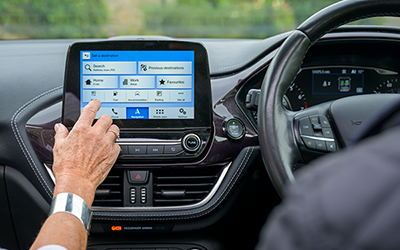
Improving customer information
- commence work to measure diversion route delay, which will be incorporated into delay metrics from roadworks and incidents
- ensure an appropriate and proportionate approach is in place for the evaluation of delay interventions
- investigate the potential of incorporating updated algorithms into the congestion management of motorways and if feasible develop a deployment plan
- develop tools to improve the prioritisation and decision on proposed delay initiatives
- carry out analysis and research to further understand the causes of delay, setting up an accountable process to feed insights into our delivery areas to drive continuous improvement
- complete the M25 junction 28 upgrade scheme and A63 Castle Street improvement scheme to improve journey time and reduce congestion at these locations
Incidents
Incidents impact a customer’s journey time but, more importantly, prevention of incidents through support, training and campaigns which can help our customers feel safe. When these events do happen, it’s important that we work to clear them quickly and safely whilst providing customers with all the information they need to make informed decisions about their journeys.
We will:
-
identify opportunities to improve how we handle incidents, to include renewed focus on longer duration incidents and real-time provision of information
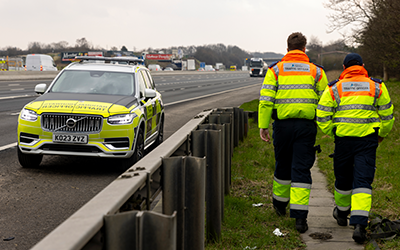
Improving how we handle incidents
- roll out refreshed customer-focused training to improve how we set variable signs and signals across Regional Operations Centres
- improve oversight and coordination of information on our variable signs and signals across the network to get information out to customers
- continue activity to raise awareness with the employers of ‘at-work’ drivers (car, van, HGV) regarding the importance of supporting the health and wellbeing of their employees. Through Driving for Better Business, we will provide appropriate resources and engagement to support organisations in this ambition
Road surface
Road surface is important to our customers, as they expect a smooth and safe journey. Uneven and noisy surfaces negatively impact journey satisfaction and the perception of safety.
We will:
- develop new quality assurance methods to improve the smoothness of new roads and the ride quality experienced by road users
- progress with network trials and supply chain engagement of the new methods to inform the drafting of new maintenance and construction standards. These standards will then be published in Road Period 3 (2026-2031)
- deliver in excess of 1000 lane kilometres of flexible pavement renewal across the network to reduce defects and improve road surface
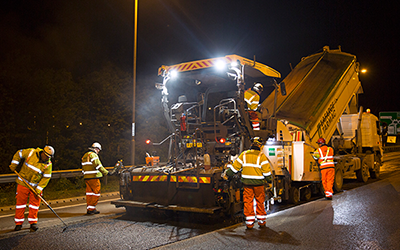
Improvements to road surface
- use customer insight from our customer audits of roadworks to understand how road surface quality affects customers and identify how we can better communicate on the network the work we are doing to improve road surfaces
- deliver a campaign that demonstrates our commitment to improving the network for customers, which will focus on various aspects, for example, resurfacing schemes. Additionally, we will raise awareness of our approach to RIS3 with a shift in focus to maintenance and renewals
- update and republish the specification for the installation and removal of permanent and temporary road markings and road studs. The specification will ensure higher quality and more durable road markings on the network
Roadworks
Roadworks have a significant impact on our customer's overall journey experience. We know from our insight data that when customers pass through roadworks, overall journey satisfaction drops.
We will:
- optimise roadworks to provide a consistent customer experience across the network – regardless of size of scheme or delivery mechanism. This will include a consistent and scalable application of customer design principles (i.e. developing and trialling the application of Roadwork Audits and the Customer Assurance Framework across delivery)
- optimise diversion routes to provide a consistent customer experience across the network - regardless of size of scheme or delivery mechanism. This will include a consistent and scalable application of customer design principles (i.e. developing and trialling the application of Diversion Routes a Customer View and electronic diversion route signage across delivery)
- enhance stakeholder working across delivery by developing and trialling stakeholder assurance, the stakeholder sentiment survey and wider use of the stakeholder engagement van across delivery schemes
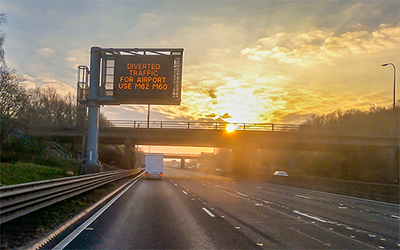
Improving customer diversion experience
- focus on the accuracy of the start and end time of works and identify opportunities for enhancing information provision to customers and thereby build trust and confidence
- continue our collaborative work with Transport Focus in the east of England to improve customer diversion experience. Agree key principles to implement across key schemes in region and review feedback to determine success
Wider priorities
We have performance measures and areas of interest which we need focussed activities on to deliver improvements. These areas also impact our customers and are important to them but are not necessarily directly measured by the Strategic Roads User Survey. These include considering end-to-end travel and supporting EV drivers, freight drivers and litter initiatives
We will:
-
progress improvements for walkers, wheelers, cyclists and horse-riders and work closely with Active Travel England
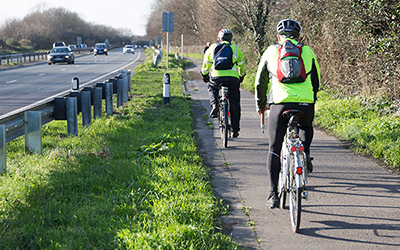
Improvements for walkers, cyclists, and horse riders
- deliver targeted litter interventions to discourage littering
- continue to develop our service for disabled customers to ensure their needs are considered (i.e. access guides and accessibility of traffic management standards)
- improve information on the location of available EV charging
- support the delivery of Rapid and Ultra Rapid charging on the strategic road network by working with roadside facilities providers and Distribution Network Operators (DNOs) to identify and remove barriers to delivery
- deliver a programme of activities to improve customer satisfaction of logistics and coach managers
- improve the experience of bus and coach passengers through the delivery of minor improvements that support integration and access to bus and coach networks
- deliver a programme of improvements at lorry parking facilities focusing on Heavy Goods Vehicle parking capacity, welfare facilities, and driver and site security
- deliver improvements to enhance the Dartford Crossing payment experience for customers
Enabling activity
Everyone in our organisation and our supply chain plays a part in delivering our customer imperative. We build capability by empowering our people to positively challenge our ways of working to ensure we’re always striving to improve the services we provide to customers.
We will:
- strengthen the capability of our customer facing and delivery teams by reviewing and refreshing our foundation training package for all frontline teams
-
recruit front line employees through utilising operator apprenticeships, which will build capability and resilience for the long term across Regional Operation Centres and the Customer Contact Centre
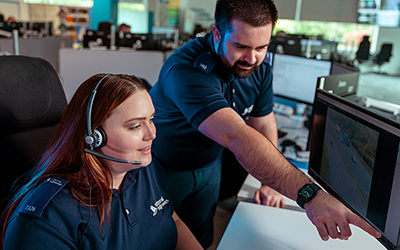
Improving customer contact services
- use a customer centric framework to bring customer into every aspect of design, delivery and decision making
- commence delivery of the data collection site renewals programme across designated regions. This will enhance our capability to monitor delays, improve journey time assessments and enable targeted interventions for average delay reduction
- improve our customer contact services including self serve information on our website
- continue to run behaviour change campaigns to help customers stay safe on the strategic road network. Safe T.R.I.P. checks, BikerTek, and HGV Know the Zones are aimed at reducing collisions for road users
- review the ways we respond via social media, exploring new platforms, and looking at ways to streamline our social media channels. Our goal is to engage more effectively with our customers through social media and ensure their interactions with us are enjoyable and safe
- increase the use of customer insights by the business by bringing them together in a shared space to make them more accessible and developing summaries for internal users of more actionable insights
- build on the review of journey expectations and lessons from other sectors to develop a set of recommendations for improving customer experience
Summary

The Customer Service Plan for 2025-2026 outlines key priorities to improve the experiences of our customers; focusing on journey time, incidents, road surface, roadworks, and other priorities, the primary goal is to ensure smooth, reliable, and safe journeys for all customers. This includes reducing delays through data-driven approaches, better management of roadworks, and improvements to diversion routes.
There is a strong emphasis on improving communication with customers and utilising customer insights to inform decisions, including improving services for disabled customers, litter and environmental initiatives, and improving real-time information. The plan also aims to address incidents quickly and safely while promoting a focus on incident prevention through training and awareness campaigns for drivers.
There is also a focus on enhancing customer-facing teams, expanding self-service options for customers, delivering safety campaigns, and improving the overall customer experience through better social media engagement and insights.
Focus Areas
How are we going to improve journey times?
- Roll out regional delay plans with a focus on reducing delays and improving congestion at identified hot spots.
- Reduce delay by improving travel choice and facilitating active travel for short and everyday journeys.
- Enhance customer focused decision making through more proactive collaboration and enhancing the use of customer insight.
- Improve the information provided via third-party services and apps.
- Measure diversion route delay and ensure an appropriate and proportionate approach is in place for the evaluation of delay interventions.
- Carry out analysis to further understand the causes of delay and drive continuous improvement.
How are we going to manage delays and incidents?
- Focus on improving how we handle incidents and provision of real-time information for customers.
- Roll out customer-focused training to improve how we set variable signs and signals.
- Improve coordination of information on our variable signs and signals across the network.
- Raise awareness of the importance of supporting the health and wellbeing of ‘at-work’ drivers (car, van, HGV) with employers.
How are we going to manage resurfacing?
- Deliver over 1000 lane kilometres of pavement across the network to reduce defects and improve road surface.
- Use feedback from roadworks audits to assess the impact of road surface quality on customer experience and better communicate road surface improvements.
- Deliver a social media campaign that explains the work we are doing and demonstrates our commitment to improving the network for customers.
- Update road marking specifications to ensure higher quality and more durable road markings on the network.
How are we going to manage roadworks?
- Optimise roadworks to provide a consistent customer experience across the network.
- Improve diversion routes, including trialling electronic diversion route signage, to provide a consistent customer experience.
- Improve the information for start and end times of roadworks.
What else are we doing (e.g. litter, cyclists, electric vehicles)?
- Improve accessibility for walkers, cyclists, and disabled customers.
- Support EV drivers by working with roadside facilities and network operators to improve access to charging.
- Deliver targeted litter interventions to discourage littering.
- Deliver improvements to logistics, coach, and bus services, including improvements to lorry parking facilities.
- Improve the Dartford Crossing payment experience for customers.
What activities will help us improve customer experience?
- Strengthen the capability of our customer-facing teams with refreshed training, apprenticeships and recruitment.
- Use a customer centric framework to bring customer into every aspect of design, delivery and decision making.
- Improve our customer contact services including self serve information on our website.
- Run behaviour change campaigns to help customers stay safe on the network.
- Review the ways we respond via social media and improve our customer contact services, including self-serve information on our website.
- Bring all our customer insight together to better understand customer needs and create actionable insights.
